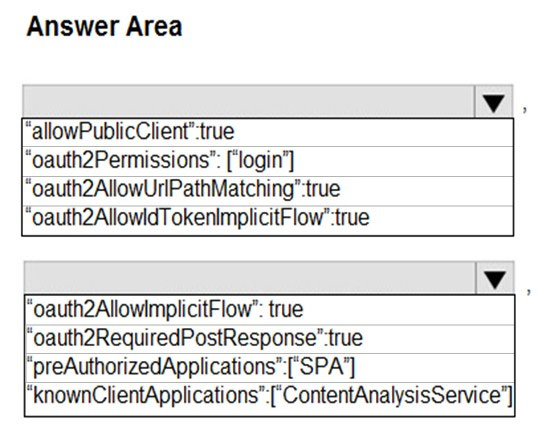

HOTSPOT -
You need to add code at line AM09 to ensure that users can review content using ContentAnalysisService.
How should you complete the code? To answer, select the appropriate options in the answer area.
NOTE: Each correct selection is worth one point.
Hot Area:

Zidimirite
Highly Voted 4 years agomlantonis
Highly Voted 3 years, 11 months agoRegex37
Most Recent 3 months agooverhill
5 months agooverhill
5 months agosekelsenmat
1 year, 2 months agoRegex37
3 months agooverhill
5 months agooverhill
5 months agoFeriAZ
1 year, 2 months agoedengoforit
3 years, 3 months agoRajMasilamani
3 years, 7 months ago[Removed]
3 years, 11 months agowtkwsk
4 years agoclarionprogrammer
4 years agotrance13
4 years ago